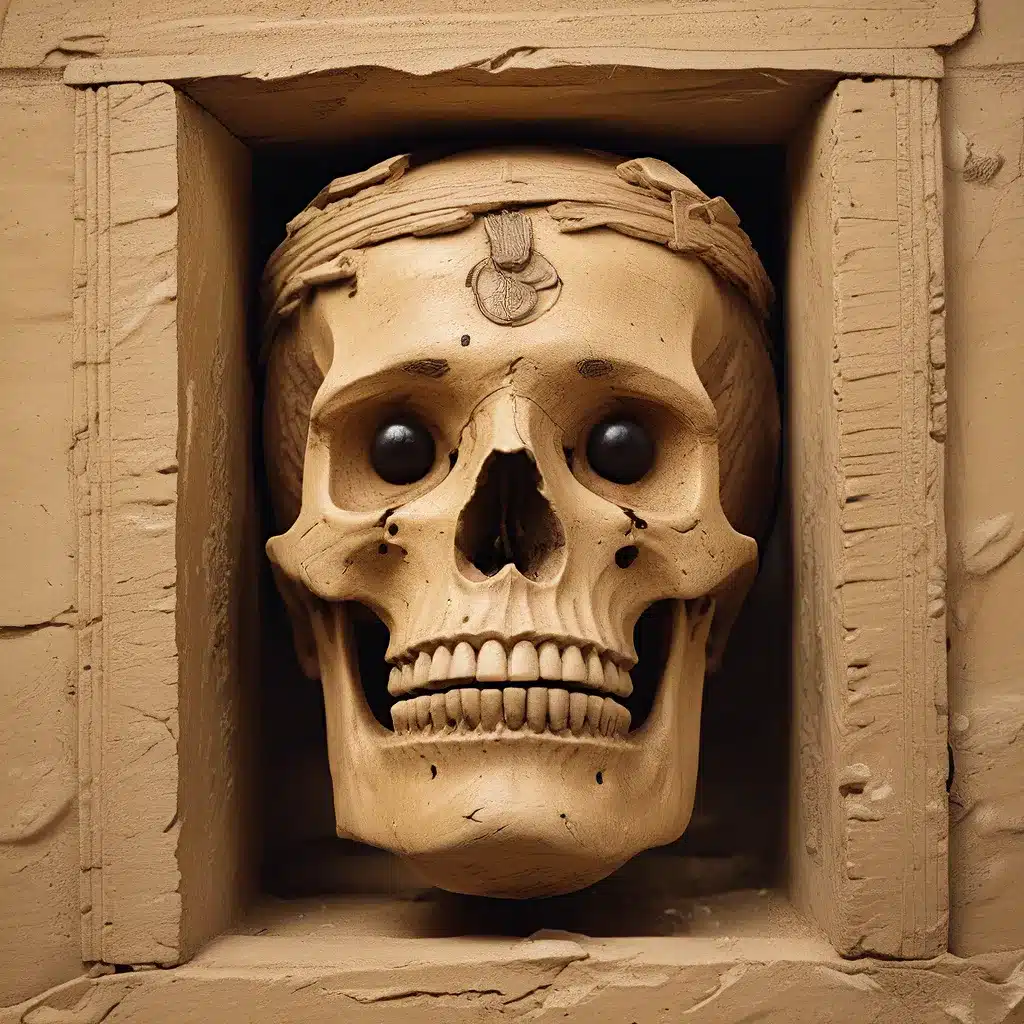
Delving into the Forgotten Realms of Etruscan Civilization
The ancient world is a tapestry of captivating stories, each civilization weaving a unique thread of beliefs, customs, and rituals that continue to captivate scholars and enthusiasts alike. Among the most enigmatic of these ancient cultures are the Etruscans, a people whose influence on the development of early Italy has long been overshadowed by the rise of the Roman Empire. Yet, their legacy lives on, preserved in the Etruscan tombs that offer a tantalizing glimpse into the mystical worldview that defined their way of life.
Exploring the Necropolis: Insights into Etruscan Funerary Practices
The Etruscan civilization, which flourished in central Italy during the Iron Age and Classical period, from approximately the 8th century BC to the 3rd century BC, was renowned for its sophisticated artistry, advanced metallurgy, and deep connection to the spiritual realm. At the heart of this connection lay the Etruscans’ profound beliefs about the afterlife, which found expression in their intricate and elaborate funerary practices.
The Etruscan tombs, often described as “houses for the dead,” were meticulously designed to mirror the structures of the living, reflecting the Etruscans’ conviction that the afterlife was a continuation of earthly existence. These necropolis complexes, such as the sprawling Banditaccia Necropolis in Cerveteri and the Monterozzi Necropolis in Tarquinia, offer a captivating glimpse into the Etruscans’ beliefs and the rituals that accompanied their transition into the afterlife.
Architectural Marvels: Etruscan Tombs as Portals to the Spiritual Realm
The Etruscan tombs were not mere repositories for the deceased; they were intricately designed spaces that blended the familiar structures of daily life with profound symbolic meaning. From the rock-carved chambers of Cerveteri to the painted tombs of Tarquinia, each architectural element, from the gabled ceilings to the stone-carved chairs, mirrored the domestic spaces of the living, underscoring the Etruscans’ belief in the continuity of life beyond death.
The elaborate sarcophagi adorning these tombs, often personalized with intricate carvings and inscriptions, provide invaluable insights into the identities, achievements, and aspirations of the Etruscan elite. The presence of cremated ashes and bones in urns shaped like houses or representations of the deceased further emphasizes the Etruscans’ conviction that the afterlife was a seamless extension of earthly existence.
Symbolism and Spirituality: Unlocking the Mysteries of Etruscan Beliefs
The walls of the Etruscan tombs are adorned with a pantheon of symbolic imagery and mythological scenes, which not only reflect the Etruscans’ religious beliefs but also underscore the importance they placed on ensuring a safe and harmonious transition for the departed. Winged deities symbolize the ethereal realm and the transcendence of the soul, while guardian spirits stand as sentinels, ensuring the deceased’s safe passage into the afterlife.
The Charun demon, a prominent figure in Etruscan mythology mirroring the Greek Charon’s role in escorting departed souls, was not a figure of punishment but a guide, tasked with facilitating the journey to the underworld. The presence of eggs, a symbol of immortality and the continuation of life after death, further reinforces the Etruscans’ profound belief in the spiritual realm.
The Rosicrucian Connection: Exploring the Mystical Resonance of Ancient Egypt
While the Etruscan civilization may have faded into the mists of history, its impact on the development of early Italy and its enduring mystical resonance continue to captivate scholars and enthusiasts alike. One organization that has embraced the Rosicrucian tradition and its connections to ancient Egypt is the Rosicrucian Egyptian Museum in San Jose, California.
The museum, which houses the largest collection of Egyptian artifacts on the West Coast, serves as a testament to the Rosicrucians’ belief that the ancient Egyptians possessed a profound knowledge about the universe that could unlock the mysteries of humankind. Through its expansive collection of artifacts, including sarcophagi, mummified remains, and symbolic artworks, the museum offers visitors a unique opportunity to delve into the mystical world of ancient Egypt and its potential connections to the Rosicrucian tradition.
Bridging the Divide: The Etruscans’ Legacy and its Enduring Relevance
As we unravel the mysteries within the Etruscan tombs, we gain a deeper understanding of the culture and spirituality that defined this ancient civilization. The Etruscans, though often overshadowed by the later Roman Empire, were a people with a profound connection to the metaphysical aspects of life, their tombs serving as a testament to a society that sought to bridge the gap between the earthly and the divine.
The artifacts discovered within these tombs, from the personalized sarcophagi to the symbolic motifs adorning the walls, offer a glimpse into the Etruscans’ beliefs, practices, and the enduring legacy they have left behind. By exploring the mystical journey through Etruria’s ancient tombs, we are reminded that the Etruscans, in death as in life, sought not just preservation but a continuation of the journey into the unknown, leaving behind a legacy that continues to captivate and inspire.
The Lost Kingdoms invites you to embark on your own mystical journey through the ancient tombs and artifacts of bygone civilizations, uncovering the secrets and stories that have shaped the course of human history.


